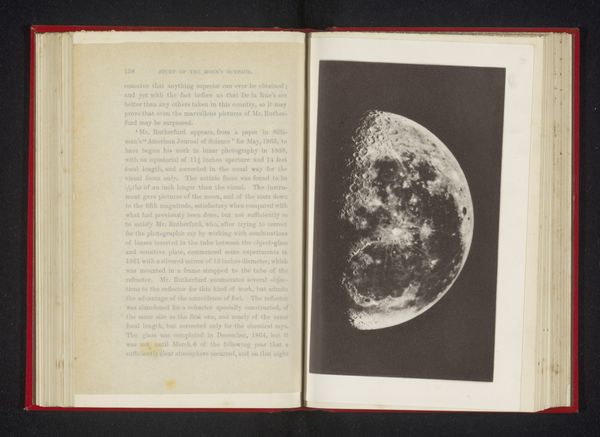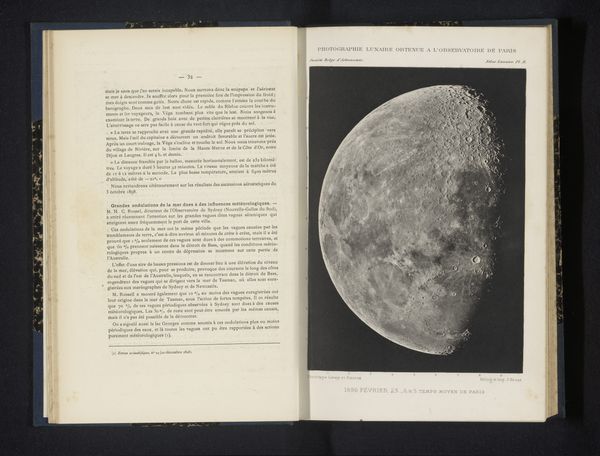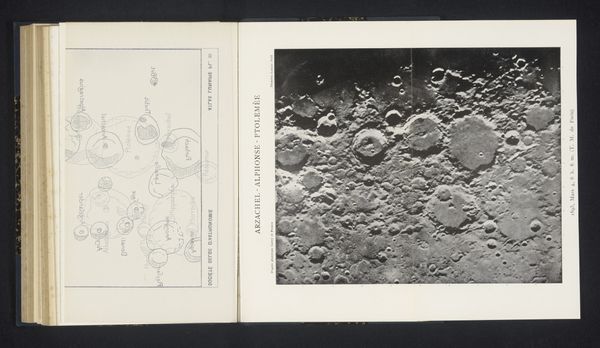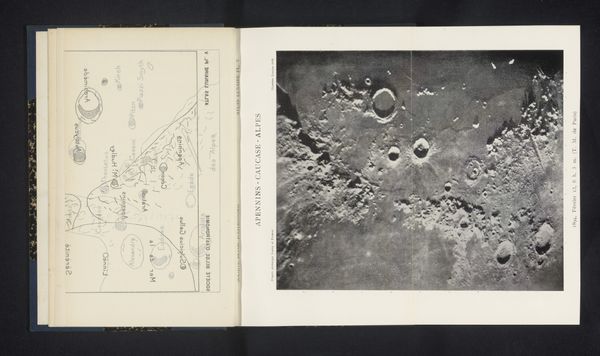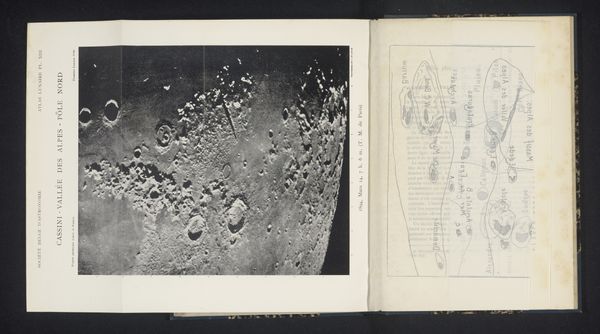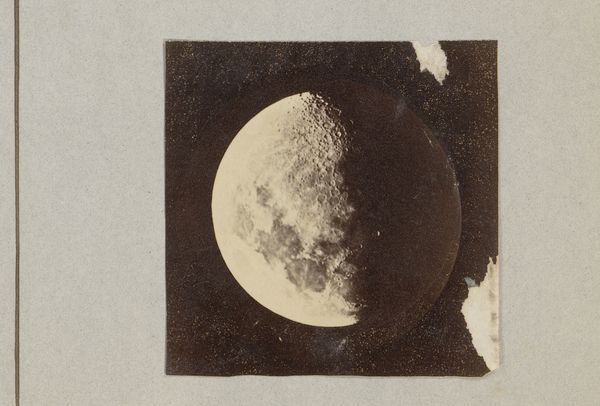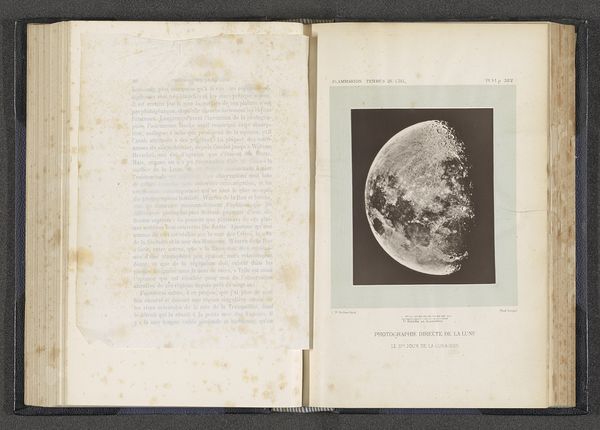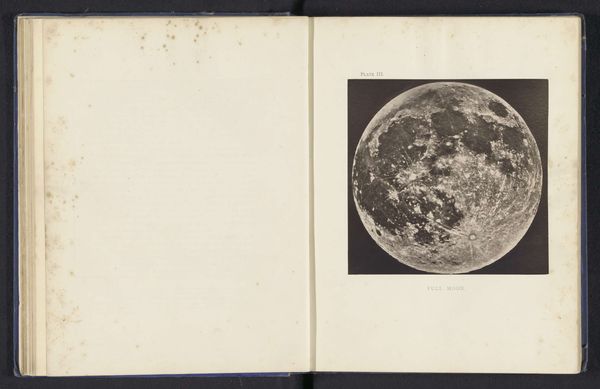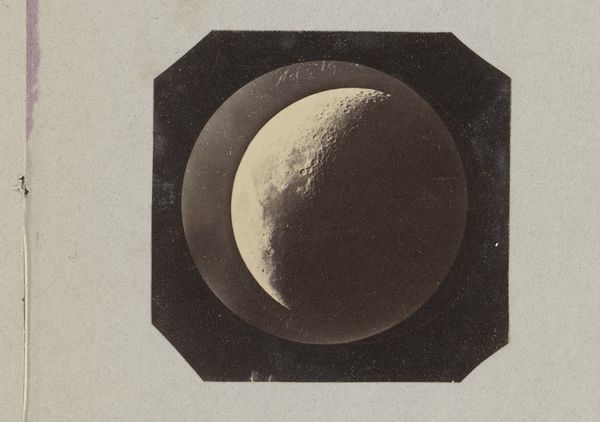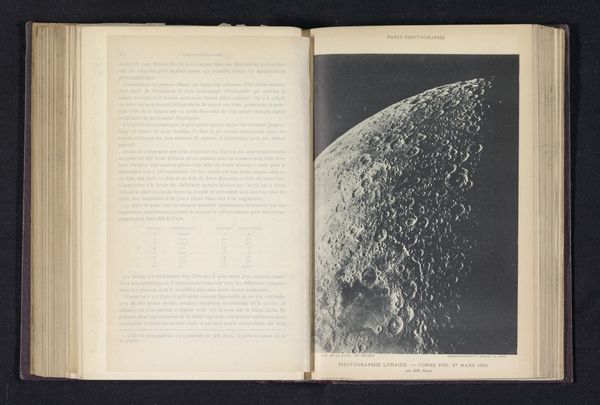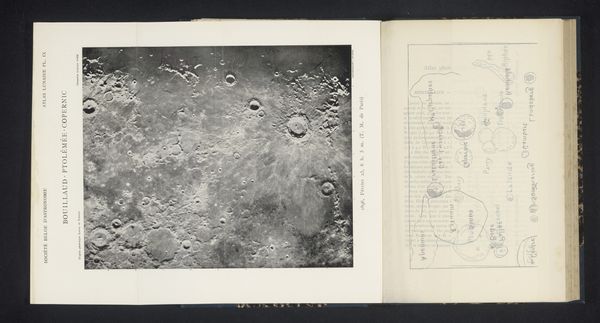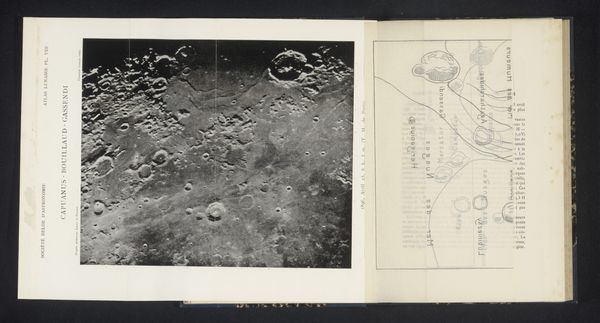
print, photography, gelatin-silver-print
# print
#
landscape
#
photography
#
gelatin-silver-print
#
academic-art
#
modernism
Dimensions: height 193 mm, width 131 mm
Copyright: Rijks Museum: Open Domain
Editor: This fascinating gelatin silver print, “Gezicht op de maan,” credited to Loewy et Puiseux and dated before 1898, captures a half-illuminated moon with stunning clarity. The stark contrast between light and shadow immediately draws me in. What's particularly striking is the scientific nature presented in an aesthetic manner. What sociopolitical elements contributed to an image like this being created and displayed? Curator: The late 19th century saw a surge in scientific exploration fueled by imperial ambitions. Mapping the heavens was as crucial as mapping colonial territories. Images like these, appearing within a broader "Atlas lunaire," served both a scientific and a cultural function. They represented progress, knowledge, and the ability to tame the unknown, projecting an image of dominance associated with burgeoning Western powers. Consider how the very act of observation, then meticulously recording and publishing such imagery, reinforced social hierarchies. Editor: So it's less about the moon itself and more about what the image *represented* to society at the time? How did the institutions, like the Paris Observatory, shape this artistic output? Curator: Exactly! The Paris Observatory wasn’t just a place of research, but also a powerful institution defining standards of knowledge and legitimizing particular visual representations. Their involvement conferred authority. These images likely circulated within specific scientific communities, but also filtered into popular culture through publications and exhibitions, shaping public perception of science and France's global position. Is there anything in the compositional choices here that hints to a larger narrative, you think? Editor: The placement of the photograph adjacent to an annotated diagram definitely reinforces that scientific intention you mentioned. Now I'm considering it beyond just its aesthetic beauty, and more as a political symbol packaged in scientific form. Curator: Precisely! Hopefully, it offers insight into the multilayered contexts influencing its creation. Remember, art rarely exists in a vacuum; its reception is as important as its creation. Editor: That really changes how I view photographs from this era. I will be keeping the concept of ‘progress’ and ‘authority’ in mind now. Thanks so much for this helpful contextualization!
Comments
No comments
Be the first to comment and join the conversation on the ultimate creative platform.
